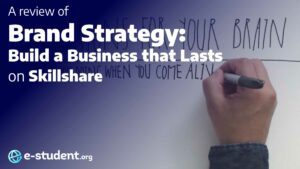Remote learning, distance education: spending hours in front of the computer screen. Watching your teachers lecture and sitting through prerecorded classes. Learning to separate home and school. Managing interactive projects over Zoom and internet connectivity problems.
E-learning has added an entirely new dimension to the age-old concept of learning.
Recently, there has been a massive increase in remote learning at all levels — which has allowed educators to understand e-learning’s effectiveness in new ways. In some cases, the implementation of e-learning has been an absolute mess, while in other cases online learning opened a whole new world of opportunities.
Going into 2021, many organizations are already catching on to the popular e-learning trends. Some of these trends are likely to be fads. These kinds of trends in e-learning are short-lived and will disappear as quickly as they arose.
Yet, other trends have shown remarkable resilience. They tend to utilize new and revolutionary technologies, increase retention rates in learners, and make online education more reachable for students of all backgrounds. These are the types of trends that are irreversible, and any company or organization that fails to keep up with them will be bound to get left in the dust.
These are 10 irreversible e-learning trends.
Irreversible E-Learning Trends
Mobile learning (M-learning)

According to Learning House, 67% of students will finish online course work using a mobile device. And 87% of potential students use a mobile device to search for a new e-Learning course. Students want to learn anywhere, using just their phones.
Over 50% of online traffic comes from mobile devices (not including tablets). The most popular software for e-Learning began with desktop access: the Learning Management System (LMS).
These software systems began with administrative functions, like attendance and grading, and evolved into platforms to deliver learning content. As e-Learning trends move into mobile learning, the LMS is forced to change its systems.
As mobile-only internet access increases, e-Learning will follow industries like entertainment streaming, shopping, and even navigation. E-learning will trend toward accommodating better mobile learning and user
Microlearning
The human attention span is relatively short. “Bite-sized chunks” of news, entertainment, and social content are becoming the most popular trends. E-learning will include microlearning programs to accommodate learners’ short attention spans and various learning styles.
Longer modules tend to be boring for students. On the other hand, microlearning in 5-minute videos maintains the students’ attention, compared with 40-minute prerecorded videos.
Microlearning courses let students focus on specific skills for a few minutes at a time — allowing students to retain more information.
These short-form lessons create an opportunity for students who are short on time to continue their education. If you only have a few minutes, you can consume entire “micro-lessons” in your free time through microlearning. Plus, you can complete short quizzes and lesson reviews quickly.
This format allows you to earn credentials that increase your qualifications and expand your employment opportunities. Microlearning is a trend prevalent in professional learning and development.
Most e-learners retain short-form microlearning courses better. These courses are more accessible to a wider variety of learning styles. They help with certain learning difficulties like ADD and ADHD.
Virtual reality (VR) and augmented reality (AR)

Virtual reality and augmented reality are taking over education at an unprecedented pace. The global virtual reality market is already valued at $6.1 billion, and set to reach $20.9 billion by 2025. Together with this massive worldwide growth of VR technologies, e-learning applications for it are bound to grow at a similar pace.
Educators around the world know there are many different learning styles. E-learning has primarily focused on learners who do well by reading text or watching video-based instruction — and learn the material well in those formats.
Technology for augmented reality (AR) and virtual reality (VR) has come a long way in a short time. There are many learners not served by reading or watching videos. AR and VR help present interactive videos — teaching a wider spectrum of learner types, such as visual and physical learners.
AR and VR have the potential to introduce e-Learning where in-person instruction is most popular. They add a spatial and relevant aspect to the learning experience that lacks depth when presented through text or video-based courses:
- Chemistry experiments come to life on your kitchen table, without the mess
- Visualize how a plant will grow through its life cycle
- Medical students can experience and practice surgery
- Walkthrough an entire museum without setting foot inside
AR and VR create an environment that increases students’ excitement, accessibility, and interactivity, creating more broadly attainable learning outcomes. They’re powerful tools to help learners of all styles further their education.
Increased accessibility for all online students
An increase in accessibility enables all learners to control and enjoy their learning paths.
One of the advantages of e-Learning is that virtual learning experiences are adaptable. The flexibility of e-Learning makes it accessible to students of all learning styles. We’ll see trends broadening the accessibility of e-Learning — such as the addition of platforms and learning modifications.
User-generated content
E-learning platforms provide a unique way for students to share their knowledge, expertise, and interests with each other and their instructors. By letting their students crowd-source and curate content, instructors increase student engagement and ownership in their education.
When students find videos that help them make sense of a challenging subject — they can share those resources with the class. If an instructor wants to teach creative problem solving and team building, they create class assignments that allow students to learn about a topic collaboratively.
This is an effective tactic for increasing learner engagement because students are curating their own learning content. Instead of being “taught at”, they’re empowered to take part in social learning. It’s also great for content creators, as the students curate their own content.
Gamification & game-based learning (GBL)
E-learning can take advantage of its online platform — and truly ramp up the interactive “gaming experience” for students. Adding games into e-Learning has been proven to increase the retention of learning material and increase student performance.
Especially compared to sitting through a lecture or reading a book.
Gamification is a trend that adds fun to the learning experience. It provides a sense of satisfaction as you complete tasks and levels.
Instructional designers will add gamification to their online courses. This helps ensure that students are well engaged and highly interactive with their education, which improves their learning experiences. Distractions in e-Learning are ample – gamifying education is a sure-fire trend to combat them.
Personalized learning
Traditionally, education has been standardized, with a rigid structure and minimal personalization for students. e-Learning and artificial intelligence are powerful tools for creating an individualized, interactive learning environment.
e-Learning software is engineered to collect information about each learner’s habits and skills. Using adaptive e-Learning, artificial intelligence supplements the teacher’s efforts. It learns to prompt study habits individually for each student.
The LMS suggests additional help for students struggling with multiplication — while a student who does well with the material will receive advanced learning suggestions. By creating a personalized learning pathway, this e-Learning trend can boost engagement.
Not only does the trend of personalized learning increase student engagement — but it improves student performance as well. As the software gets more sophisticated, it will offer suggestions earlier, before a teacher might see a student falling behind, boosting that student’s success.
Virtual conferences
e-Learning has the power to bring entire communities of people together. People with similar interests and education attend virtual presentations to learn about their favorite subjects. As popular in-person events moved online in 2020, virtual conferences shifted to the forefront.
With better technology to broadcast interactive videos, virtual conferences provide all the benefits of their physical counterparts. Small groups of attendees can gather online to discuss what they’ve learned. This builds community, allowing students to share trends of what they’ve been learning.
If an e-learner cannot attend an event because it’s too far from their physical location, a virtual conference allows them to participate. Thus, you can continue your education and network with other attendees virtually.
Collaborative e-learning
e-Learning will encourage community through the unique collaboration of its collective learners. When students engage with content and each other, “curriculum as a community” develops. Students learn as much from each other as they do from official instruction.
This trend focuses on an essential factor of learning: social interactions. e-Learning will transform students’ close associations in community-wide learning opportunities.
Online learning platforms can include built-in networking options. Students are then able to connect individually, in small groups, or as a whole. This facilitates relationship building in a way that mimics in-person learning and engages the learners in natural learning practices.
With instructor-led discussions, challenging ideas, and each student’s uniques experiences — students can genuinely experience collaborative learning through their community.
Social learning

The most ambitious way for educators to create online learning communities is to harness the power of social media. Since most people spend time on social platforms, it’s a great way to integrate education and society.
By creating discussion through social media hashtags, using forums in pre-existing spaces, and challenging students to use the platforms for their education — instructors in e-Learning spaces bring learning into online social communities.
More e-Learning instructors will use social learning to increase students’ awareness of current issues. By funneling student usage tendencies into learning from the community at large, instructors will create lifelong learners. e-Learning will effectively utilize the community that is already thriving.
Bringing together people of different backgrounds, experiences, and lifestyles defines the education experience for many people. As e-Learning expands into 2021, we expect to see instructors and students recreating the communities in physical learning spaces.
e-Learning will continue to grow throughout 2021. We’ll see the most effective and constructive trends in e-Learning continue to build. Are you looking to further your education in 2021? Check out our course reviews today to see which one is the best for you.
Are you an educator looking to expand your repertoire in e-Learning? Start here to learn even more about e-Learning, and we’ll help prepare you for the future of education.



